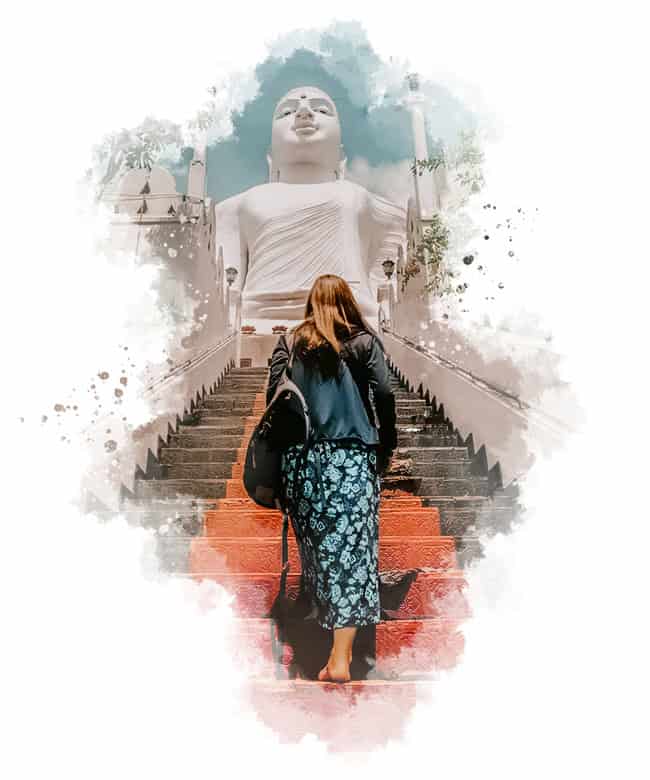
Kandy, The Cultural Capital
Things to do, weather & itineraries
As a part of Sri Lanka’s cultural triangle, the ancient city of Kandy is a UNESCO World Heritage Site that is steeped in a history of Sinhalese and British rule. With its sacred temples, lush greenery, and a bustling commercial hub, Kandy offers insight into local culture and tradition, making it a must-see destination on every itinerary.
Among its many attractions, Kandy is best known for the Temple of the Tooth which houses the tooth relic of Lord Buddha. However, the city also has a reputation for its vibrant displays of traditional dance and the many varieties of exotic plants grown in the Peradeniya Botanical Gardens.
The average daytime temperatures in Kandy range from 27°C to 30°C (80.6°F to 86°F), with the heat reaching an all-time high in April. By nighttime, temperatures drop to as low as 21°C (69.8°F), making the region pleasantly cool.
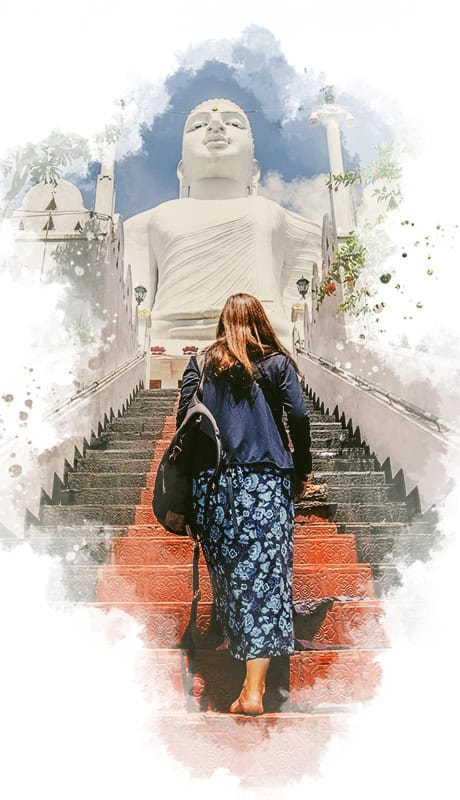
Kandy, The Cultural Capital
Things to do, weather & itineraries
As a part of Sri Lanka’s cultural triangle, the ancient city of Kandy is a UNESCO World Heritage Site that is steeped in a history of Sinhalese and British rule. With its sacred temples, lush greenery, and a bustling commercial hub, Kandy offers insight into local culture and tradition, making it a must-see destination on every itinerary.
Among its many attractions, Kandy is best known for the Temple of the Tooth which houses the tooth relic of Lord Buddha. However, the city also has a reputation for its vibrant displays of traditional dance and the many varieties of exotic plants grown in the Peradeniya Botanical Gardens.
The average daytime temperatures in Kandy range from 27°C to 30°C (80.6°F to 86°F), with the heat reaching an all-time high in April. By nighttime, temperatures drop to as low as 21°C (69.8°F), making the region pleasantly cool.
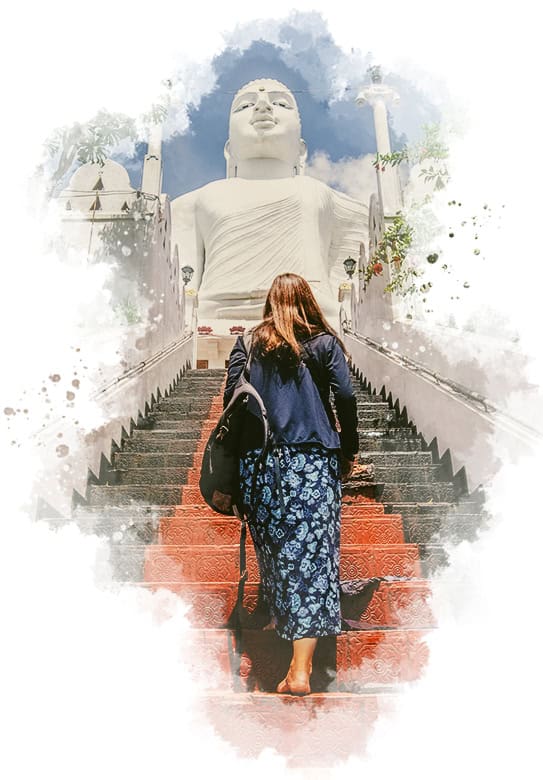
Kandy, The Cultural Capital
Things to do, weather & itineraries
As a part of Sri Lanka’s cultural triangle, the ancient city of Kandy is a UNESCO World Heritage Site that is steeped in a history of Sinhalese and British rule. With its sacred temples, lush greenery, and a bustling commercial hub, Kandy offers insight into local culture and tradition, making it a must-see destination on every itinerary.
Among its many attractions, Kandy is best known for the Temple of the Tooth which houses the tooth relic of Lord Buddha. However, the city also has a reputation for its vibrant displays of traditional dance and the many varieties of exotic plants grown in the Peradeniya Botanical Gardens.
The average daytime temperatures in Kandy range from 27°C to 30°C (80.6°F to 86°F), with the heat reaching an all-time high in April. By nighttime, temperatures drop to as low as 21°C (69.8°F), making the region pleasantly cool.
Tour itineraries featuring Kandy
As mentioned earlier, the main excursions that you can enjoy in Kandy are Temple of the Tooth, Peradeniya Botanical Garden and the cultural show. If you would like to see how these excursions fit into a Sri Lanka itinerary, please refer to the below itineraries.
Tour itineraries featuring Kandy, Sri Lanka
As mentioned earlier, the main excursions that you can enjoy in Kandy are Temple of the Tooth, Peradeniya Botanical Garden and the cultural show. If you would like to see how these excursions fit into a Sri Lanka itinerary, please refer to the below itineraries.

Sri Lanka with Toddlers
Enjoy the best of Sri Lanka with your little ones. A slow-paced family holiday for people travelling with toddlers.

Sri Lanka Culture Trip
Discover the Magical beauty and the rich culture of Sri Lanka with our well-designed Sri Lanka culture trips.

SL & Maldives Family
A perfect family adventure in the picturesque Sri Lanka combined with the pristine beaches of luxurious Maldives.
Request a Free Quotation
Would you like to get our assistance to organize your Sri Lanka holiday? Drop us a message to get a tailor-made Sri Lanka holiday package that reflects your interests, budget, tour duration and the weather conditions of the month that you visit Sri Lanka.
Things to do in Kandy
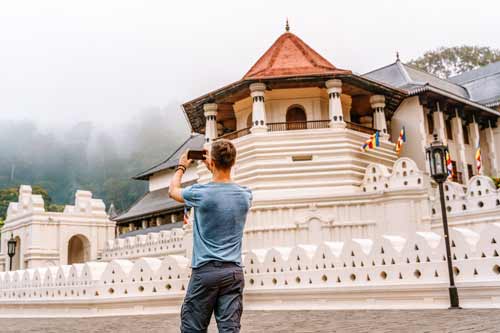
As its name suggests, the highlight of the temple is the sacred tooth relic. Legend has it that the relic was smuggled to Sri Lanka by Princess Hemamala at her father’s request. Accompanied by her husband, Prince Danta, the tooth was concealed in Hemamala’s hair, and it was delivered to Anuradhapura in the 4th century AD.
The relic soon became a symbol of divine authority among the Sinhalese kings, who would set up temples to safeguard it whenever the royal capital of the nation changed. It was only during the reign of King Wimaladharmasuriya I in 1595 that the Temple of the Tooth became the relic’s permanent resting place.
Today, the relic can be viewed in its golden casket during the daily service rituals (thévava) which are held at 5.30am, 9.30am, and 6.30pm. Visiting the temple at these times will also let you observe the rituals which are carried out to honour the sacred tooth.
Please keep in mind that you must comply with the temple dress code to enter this temple. A simple white outfit which conceals your bare shoulders and knees is especially ideal if you want to blend in with the locals, but you can easily rent a sarong from the vendors by the entrance if you do not have the appropriate attire.
If you are travelling to Kandy in July or August, do not forget to check if the time of your visit coincides with the Esala Perahera. During this lively procession, drummers, dancers, fire-eaters and many others take to the streets to pay homage to the tooth relic.
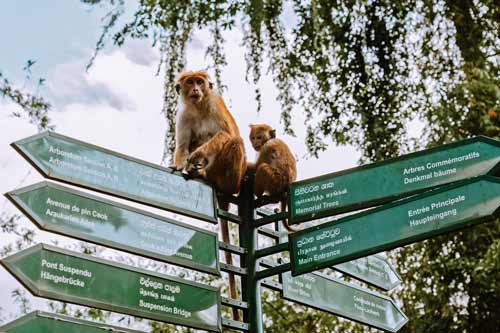
Historically, the garden was used for recreational purposes by the Sinhalese kings, and it dates back to the reign of King Wickramabahu III in the 1300s. By 1821, the area was formally established as a garden by the British, who brought over plant varieties from the Kew Royal Botanical Gardens in London.
Today, the garden is split into 30 sections which can be toured at your own pace. Apart from visiting its famed Orchid House and collection of giant bamboos, most travellers take a stroll down its Royal Palm Avenue to clear their minds.
While you will need a minimum of two hours to see most of what the garden has to offer, it is easy to lose track of time once you are inside. That being said, you are guaranteed to end your tour with a newfound love of nature.
Although the garden is best explored on foot, you can hire a buggy cart to drive you around if you are unable to walk for long stretches of time. You can also drop by the attached café and restaurant for a quick bite and a cup of tea once you are done.
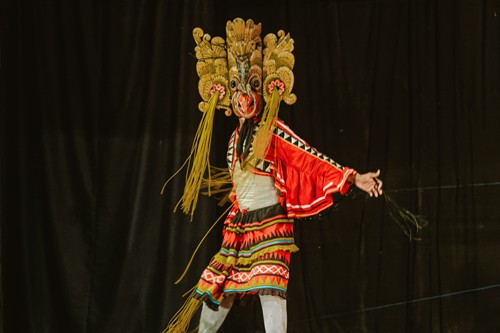
The local instruments set the stage for the dancers to deliver a passionate performance that is timed to the heavy beating of drums in the background. Garbed in elaborate costumes and headdresses, these dancers also exhibit their skills as acrobats by walking on fire and eating fire.
The cultural show is a daily performance that begins at 5.30pm at the Kandy Lake Club. Although each performance lasts for an hour, it is guaranteed to keep you on the edge of your seat. That being said, you may have to show up early to secure the seats with the best view of the stage.
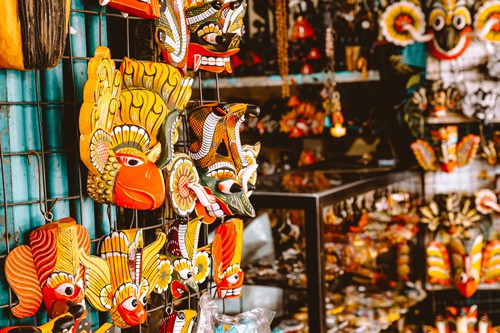
While the antique shops scattered haphazardly on the streets sell intricate woodcarvings and jewellery, the clothing stores beside them offer a colourful selection of batik fabrics. Among these boutiques, you will also find plenty of gift shops which sell all kinds of souvenirs that you can take back home with you.
For a more sophisticated shopping experience, you can drop by Kandy’s malls to find what you need. These complexes have plenty of department stores with designer brands to choose from.
Even though bargaining is not a common practice in Sri Lanka, do not hesitate to put your skills to the test and haggle for the best prices when purchasing expensive gems and woodcarvings.
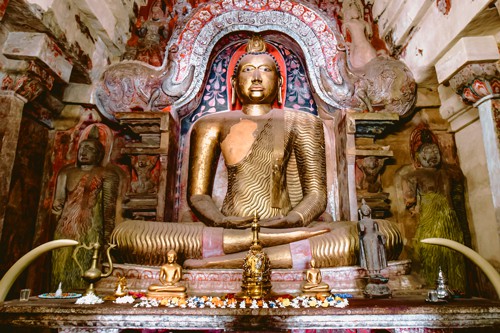
Gadaladeniya is one of the largest rock temples on the island which features Dravidian architecture with Sinhalese influences. Built in the 14th century by King Buwanekabahu IV, this Buddhist temple is best known for its stone carvings, its seated Buddha statue and the Makara Thorana (Dragon’s Arch). It also offers gorgeous views of the surrounding mountains.
Lankathilaka is yet another Buddhist temple built by King Buwanekabahu IV with South Indian influences. Although the main building was originally a four-storey brick structure built atop an uneven rock, only three storeys can be accessed by visitors today. Even so, the sculptures, paintings and stone inscriptions of Lankathilaka makes it a testament to the rich history of the Kandyan Kingdom.
On the other hand, Embekka is an ancient Hindu temple where pilgrims gather to worship the guardian deity of Sri Lanka, the Kataragama Deviyo. This temple is made up of three parts: an inner sanctum, the Dancing Hall, and the Drummers’ Hall, which feature intricate wood carvings of animals, deities and warriors. With the exception of the sanctum, everything within the temple is made of wood, making it an architectural marvel.
While these temples are regretfully overlooked by travellers, they offer insight into ancient architecture and the link between Buddhism and Hinduism. This makes the Three Temple Loop especially ideal for those who are interested in Sri Lankan culture.
However, before you embark on this excursion, keep in mind that you must comply with the temple dress code. Consider purchasing a sarong to carry around with you, so that you can cover your bare shoulders and knees before entering each temple.
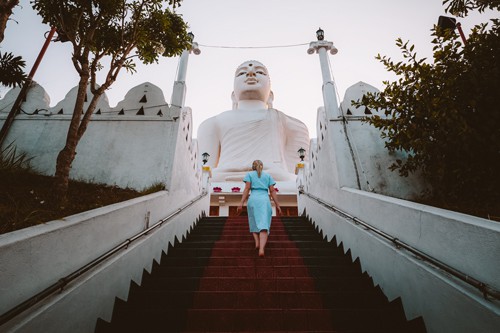
Built in 1972, the statue and the temple are relatively new structures which lack the historical importance that is associated with other religious sites in Kandy. However, what it lacks in history, it makes up for in its might, as the carved Buddha statue is visible from nearly every part of the city.
Most travellers visit this attraction to see the statue in person, but if you do not mind a short climb, you can get to the top of the monument and enjoy breath-taking views of the cityscape and the surrounding greenery.
In order to enter the Bahirawakanda Vihara, you must comply with the temple dress code. Not only will you be asked to remove your hats and shoes by the entrance, but you must also cover your bare arms and knees with a sarong. Please note that the temple will charge you a small fee to rent one of their sarongs, which you can wrap around your body.
As the temple is on a hill, getting there by foot is out of the question, especially in the afternoon. Your best choice is to flag down a tuk-tuk which will take you there with enough time to spare.
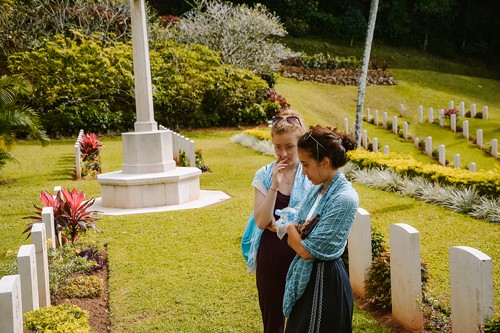
In the period between 1817 and 1873, the cemetery was the main burial ground for British nationals in Kandy. With the advent of the Second World War, Kandy became the base of the South East Asia Command, and this graveyard was turned into a resting place for those who had succumbed to death while fighting for the British Empire.
While most of the graves within the landscaped gardens belong to the military, several belong to the air force, national fire service and navy. So, as you take a quiet stroll amidst the greenery, you can pay your respects to the war veterans who sacrificed their lives in a brutal struggle for peace.
Frequently Asked Questions
1. Is Kandy Sri Lanka worth visiting?
Kandy is absolutely worth visiting. As the cultural capital of Sri Lanka, it is ideal for those who want an in-depth understanding of the island’s rich history, and experiencing its culture will tell you everything you need to know about the locals and their lifestyles.
The region is also extremely picturesque. At the heart of the busy city lies the Kandy Lake—a temporary yet tranquil respite which will help you unwind from the stresses of life. From afar, the mist-topped mountain slopes and lush forests gather to create a scene that is straight out of a postcard.
To prevent travellers from spending long hours on the road, Kandy is generally included as a stopover on most itineraries. For this reason, it is highly recommended that you at least spend 1 night in Kandy.
2. What is Kandy famous for?
As a wonderland of cultural landmarks, religious sites, exotic plants and streetside boutiques, Kandy’s fame as a tourist destination comes from the insight it offers into history and tradition.
Among Buddhists, Kandy is revered as a sacred city with a rich history of Buddhism. Pilgrims from across the globe gather to worship at the Temple of the Tooth, which safeguards the sacred tooth relic of Lord Buddha. However, the city is the liveliest during the famed Esala Perahera which is held in July or August.
Kandy also gets its fame as a botanical paradise, and most tourists stop by the Peradeniya Botanical Garden to admire Asia’s finest plant collection during their travels. Apart from this, the city has a reputation for its displays of Kandyan culture, which can be enjoyed in an evening performance of traditional dance at the Kandy Lake Club.
Most tourists also hit the streets to explore the city’s little boutiques in the late afternoon. These roadside shops specialize in batik fabrics, precious gems and all kinds of trinkets that will definitely catch your eye.
3. What is the best time to visit Kandy?
The best time to visit Kandy is from mid-December to mid-April, and from July to September. It is during these two periods that Kandy receives the lowest average monthly rainfall, so you will not have to worry about the weather affecting your schedule.
4. Is Kandy or Colombo better?
Kandy and Colombo have their fair share of advantages and disadvantages, but the question of whether one is better than the other depends on what you are looking for.
For example, Kandy is preferred by many for its cultural heritage and natural beauty. As the last independent kingdom of the Sinhalese before the British takeover in 1815, Kandy has plenty of religious sites and ancient landmarks to explore. And, if you want some peace and quiet, you can easily visit its botanical gardens or take a tour of a nearby sanctuary.
On the other hand, Colombo is the fast-paced and urbanized commercial capital. While its cultural experiences are lacking in comparison to Kandy, it remains a favourite among travellers who prefer to have a variety of excursions to choose from. Since there is always something to do in Colombo, you will not get bored of this bustling city. Although it lacks the serenity of Kandy, it is a shopper’s paradise with plenty of little boutiques and shopping complexes to choose from. Galle Face Green, Colombo National Museum and Gangaramaya Temple are a few more sites to enjoy in Colombo.
That being said, there are no disadvantages to touring both cities during your stay. It is best that you structure your tour so that you have enough time to experience the main attractions in Kandy and Colombo. But if you are running short on time and you want to learn as much as you can about Sri Lanka’s culture before you leave, Kandy is definitely the better choice.
5. How many days do you need in Kandy?
You will need 1 to 2 days to visit Kandy’s main attractions at your leisure. However, if you are interested in experiencing everything that this ancient city has to offer, from its common tourist spots to the landmarks that are less frequented, you can complete your tour of Kandy in 3 days.
More Tips for Your Holiday
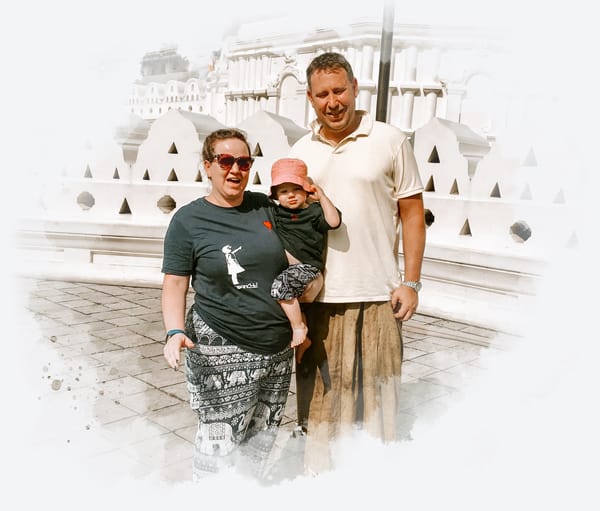
"We have had our amazing driver taking us around Sri Lanka with our 15 month old daughter for the last two weeks. Everything has been organized for us and everything has been perfect.Anyone thinking about going to Sri Lanka with their little ones should book with Travellers Isle. Nothing has been too much trouble for them. All hotels have been fabulous and our driver has been so helpful, amazing with our daughter, professional and knowledgeable."

